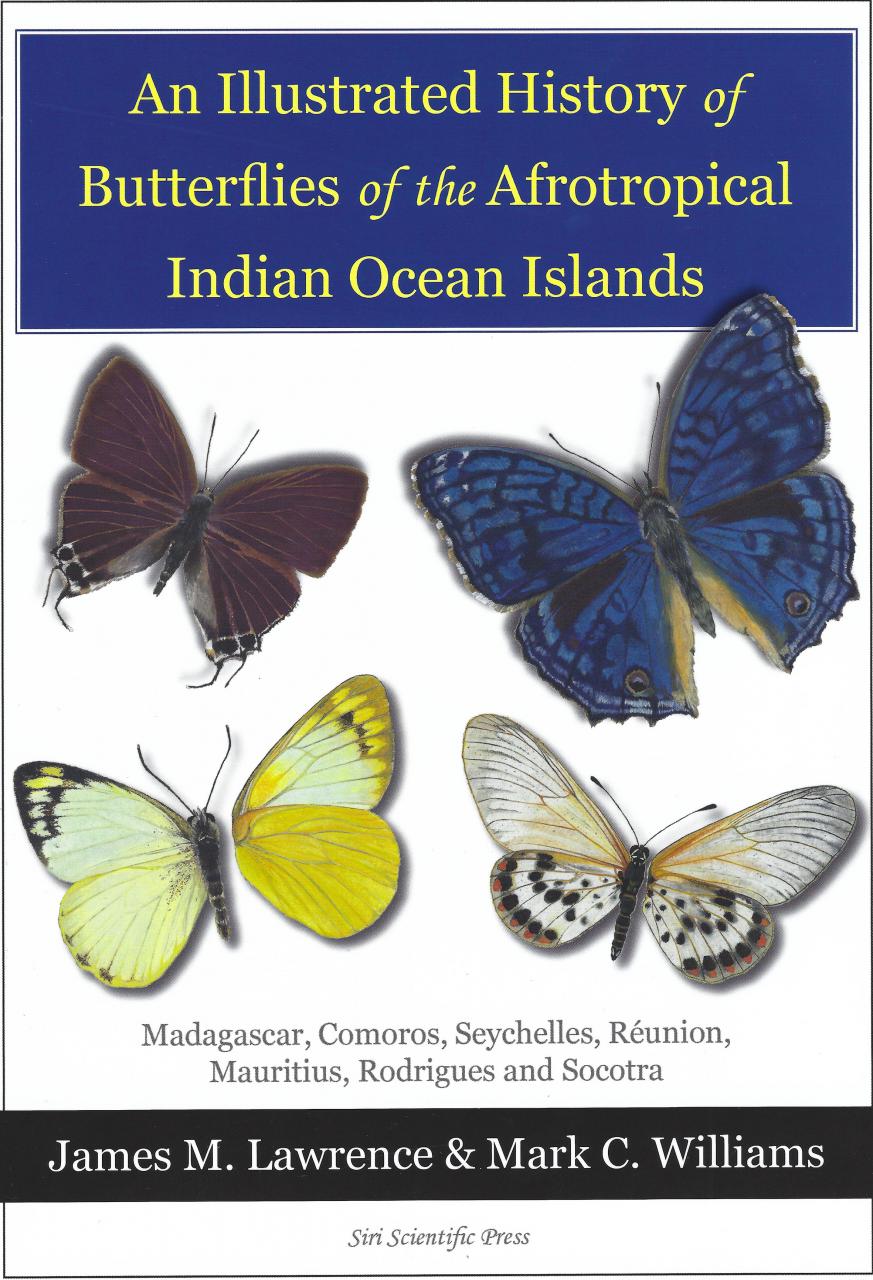James M. Lawrence & Mark C. Williams
Siri Scientific Press
2021
ISBN: 9781838152833
Reviewed by Dmitri V. Logunov
It is my pleasure to introduce a new colourful book on butterflies of the Afrotropical Indian Ocean Islands. Information on all butterfly species occurring in Madagascar, the Comoros, the Seychelles, the Mascarene Islands (Réunion, Mauritius, and Rodrigues) and the Socotra Archipelago has been consolidated in a single book for the first time.
Most species considered are endemics to the region.The authors are famous lepidopterists from South Africa: Dr J.M. Lawrence published numerous papers and two field guides to butterflies of the Seychelles and the Philippines; M.C.Williams is the President of the Lepidopterists’ Society of Africa and the author of two books on Afrotropical butterflies.
The book aims to provide ‘a detailed summary of the published information’ ‘acting as a starting point in advancing our knowledge on the natural history and conservation of these insects’; indeed, this aim is achieved. It presents accounts on 391 butterfly species, of which 311 species are illustrated with 805 individual drawings. Males and females of each species are shown with both upper- and under-wing images. Many species are illustrated by multiple drawings to demonstrate the colour variation: e.g., Gideona lucasi (3 males and 3 females), Acraea hova (3 males and 3 females), Telchinia masamba (4 males and 4 females), etc. The first chapter ‘The Islands’ sets the scene, providing a short but informative summary on the island archipelagos considered in the book. The chapter ‘Literature’ is a review of the books and papers devoted to the Afrotropical butterflies that contain information on the insular faunas.This section is richly-illustrated by copies of the colour plates taken from rare, old books which are often out of reach of the general public; from the first publication by C. Linnaeus (1771) to the latest books published by the authors themselves (Lawrence, 2015). It is of value that 150 species are illustrated by the iconotypes, i.e., the drawings were made from the corresponding types. The literature review is followed by detailed ‘Species Accounts’ containing standardised sets of information for each of the 391 species included: modern species name, reference to illustrations, a mean wingspan range, type locality, general distribution, biology (if any data are available), and synonyms. Common English names are not provided for species, but given to family and generic names. If the species accounts had included details on exact records of each taxon, this would have made this section a complete catalogue of the studied butterfly fauna, but exact localities are not given. It is a pity that there is no general discussion on the present state of the knowledge of the studied butterfly fauna and its diversity, overall and across the island archipelagos, or the problems of regional butterfly conservation.
Overall, the book has made a very good impression on me, and I wish to congratulate the author and publisher for such fine work. Such a richly-illustrated account could serve as a reliable field guide for anyone interested in the insular fauna of African butterflies. In my opinion, it is a must for both private libraries and those of any natural history museum or university.


